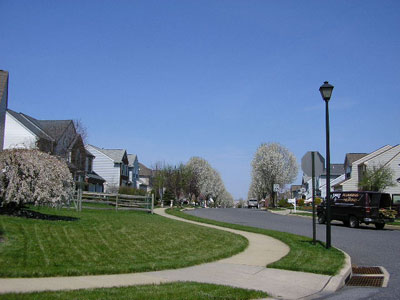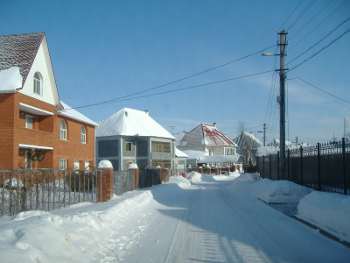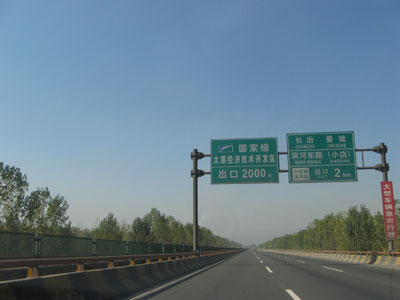NewGeography.com blogs
The Bureau of the Census has updated its city (municipality or local government area) population estimates for 2009. Predictably, anti-suburban interests saw more indication of the elusive (read non-existent) exodus from the suburbs to the central cities. One analyst even suggested that a "high quality" of life in one central city (Washington, DC) might have kept people from moving to the suburbs. In fact, since 2000, nearly 40,000 people (domestic migrants) have moved out of the city of Washington and in the last year, the city gained 4,500 residents while the suburbs gained 13,700.
In contrast, Buffalo News reporter Jack Ray looked at the data and noted that some cities in that metropolitan area were growing rather quickly, while others were losing population. Generally, he found that outer suburban communities were growing more quickly. Ray's analysis was reflective of trends around the nation.
There are nearly 20,000 incorporated cities, towns and villages in the United States. Population trends in these cities show that urban areas are growing most strongly on their suburban fringes or even in their exurbs. For example, two-thirds of the fastest growing 100 municipalities in the nation were suburbs or exurbs in the nation's major metropolitan areas (those with more than 1,000,000 population). The other third were all municipalities in smaller metropolitan areas or outside metropolitan areas.
The extent of this growth on the edge is illustrated by an examination of the nation's municipalities of 25,000 or greater population that grew more than 25% between 2000 and 2009.
- Among the 89 municipalities that grew 50% or more, 59 were in major metropolitan areas and all were suburbs (nearly all near the urban fringe) or exurbs. The total population growth among these suburbs and exurbs was 2.2 million from 2000 to 2009, for an average growth rate of 91%. These major metropolitan suburbs and exurbs grew 1.8 million, while the municipalities outside the major metropolitan areas added 400,000.
- Among the 119 municipalities that grew between 25% and 50%, 69 were in major metropolitan areas. This included 67 suburbs and exurbs. It also included 2 central cities, Raleigh (39%) and Atlanta (28%). These major metropolitan area suburbs and exurbs gained 1.7 million residents, while the two central cities gained a total of 200,000. The municipalities outside the major metropolitan areas grew 1,000,000.
 Combined, the fastest growing suburbs and exurbs with more than 25,000 population grew more than 3.5 million, while the municipalities outside the major metropolitan areas grew 1.5 million, for a combined growth of more than 5.0 million. The smaller high growth municipalities (under 25,000), nearly 1,200 of them, both major metropolitan and outside, grew another 2.5 million. Combined, the fastest growing suburbs and exurbs with more than 25,000 population grew more than 3.5 million, while the municipalities outside the major metropolitan areas grew 1.5 million, for a combined growth of more than 5.0 million. The smaller high growth municipalities (under 25,000), nearly 1,200 of them, both major metropolitan and outside, grew another 2.5 million.
The fastest growing municipalities, excluding the two central cities of Raleigh and Atlanta, accounted for nearly one-third of the nation’s growth between 2000 and 20009.
Most of the fast growing suburbs and exurbs have names that are simply not recognizable. Yet, a half-dozen added nearly as many or more new residents than all of the 20-plus central cities combined in the major metropolitan areas that do not have large swaths of suburbanization inside their borders. These include such places as Phoenix suburb, Surprise, Dallas-Fort Worth suburb Frisco and Riverside-San Bernardino suburb Beaumont.
In Crabgrass Frontier: The Suburbanization of the United States , Kenneth Jackson noted that central Philadelphia began losing population in the early 19th century. The dispersion of America continues. , Kenneth Jackson noted that central Philadelphia began losing population in the early 19th century. The dispersion of America continues.
Photograph: Exurbs of New York: Pike County, Pennsylvania
Bloomberg Business Week reports that the Russian government wants to move urban residents from their "cramped" high rise apartments to new suburban developments. Single family houses would be built in joint ventures with private developers. Present plans are to develop 2.5 million acres of suburban homes. This is a very large program. At Los Angeles densities, this amount of land would be sufficient to house about 28,000,000 people, roughly double the present population of the Moscow urban area.
 As occurred before in the United States, expanding suburban home ownership could generate a democratization of prosperity that brings far better living conditions to middle income households. Already, more affluent households have built European and American style detached houses outside Moscow's 8-lane ring road (see photograph). As occurred before in the United States, expanding suburban home ownership could generate a democratization of prosperity that brings far better living conditions to middle income households. Already, more affluent households have built European and American style detached houses outside Moscow's 8-lane ring road (see photograph).
Photograph: New detached housing, northern Moscow suburbs (Veshki).
Andrew Batston of The Wall Street Journal writes of China's decentralization, with the growing employment in interior urban areas. Until the last decade, most of China's spectacular urban population and employment growth had occurred on the East Coast, especially in the world's largest megaregions of the Pearl River Delta (Hong Kong-Shenzhen-Dongguan-Guangzhou-Foshan-Jiangmin-Zhongshan-Zhuhai-Macao), the Yangtze Delta (Ningbo-Shaoxing-Hangzhou-Shanghai-Suzhou-Wuxi-Changzhou-Nangjing) and Beijing-Tianjin. Millions of migrant workers had traveled to the East Coast from the interior to take jobs paying far more than they could earn at home.
But that has changed. Industrial production and jobs have expanded substantially in the interior, making it possible for people to take jobs closer to home, in Chongqing, Chengdu, Xian, Changsha, Wuhan, Shenyang, Taiyuan and many more urban areas. This is a fortuitous development, because the mega-regions are already sufficiently populated and could have well grown far larger if the interior development had not taken place.
However, jobs have become more plentiful in the interior. China's growing US interstate standard expressway (freeway) system has been an important contributor to this development. Like the US system, there are no grade crossings and all roadways have at least two lanes of traffic in each direction.
 Now, a number of interior urban areas are now within a day's truck drive of the East Coast ports and those that are not are within two days. According to China Daily, the 65,000 kilometers (over 40,000 miles) of the national expressway system is open. This does not include extensive provincially administered systems, such as in Beijing, where four full freeway ring roads are open and a fifth is at least half complete (Beijing has six ring roads, but the first is not a freeway). Shanghai has an extensive locally administered freeway system, as do some other urban areas. Now, a number of interior urban areas are now within a day's truck drive of the East Coast ports and those that are not are within two days. According to China Daily, the 65,000 kilometers (over 40,000 miles) of the national expressway system is open. This does not include extensive provincially administered systems, such as in Beijing, where four full freeway ring roads are open and a fifth is at least half complete (Beijing has six ring roads, but the first is not a freeway). Shanghai has an extensive locally administered freeway system, as do some other urban areas.
By comparison, the US interstate system is approximately 46,000 miles (this excludes 1,000 miles of 2-lane interstate designated conventional highway in Alaska), and a total of 57,000 miles including non-interstate freeways. China is expected to displace the United States in freeway mileage by the end of the decade, when plans call for more than 60,000 miles.
Photograph: National Expressway Route G-040 near Taiyuan, Shanxi
Mega-builder Larry Murren, whose company (MGM Mirage) opened the "largest privately funded construction project in U.S. history" told WSJ (the Wall Street Journal Magazine) that if he had to do it all over again, he would reconsider the condo-residential component of the project. “We would have built about half of those units” at the new $8.5 billion "City Center" development.
The less than stellar performance condominium sales in the project was reported by the Las Vegas Review Journal, which indicated that only 78 of the project's approximately 675 condominium units have sold. MGM Mirage is not alone in this plight. The Review Journal further notes that Las Vegas has a reports a 250 month or nearly 21 year supply of unsold condominium units. This means that some of today's unsold units could still be on the market for parents in a suburban Las Vegas house to move to when their newborn heads off to college. These numbers qualify Las Vegas for finals of the Condo Bust World Cup, against other strong competitors Miami and Dubai.
Murren credits a mixed-use symposium as the inspiration for City Center. Murren would not be the first developer to have been smitten by over-promotion of condominium market prospects. However the balance of Center City (shopping, entertainment, hotels and casinos) appears to be doing far better than the condominium element.
Second thoughts have been occuring to a number of additional central city condominium developers around the nation as the central city condominium market continues its meltdown. The most recent evidence comes with condo auctions in the cores of Baltimore, St. Petersburg and Boston.
In Baltimore, Pier Homes at Harborview has scheduled an auction of new units with minimum bids discounted from 55% to 75% below list prices. This means that the minimum bid, the Baltimore Sun indicates that only half of the units (completed two years ago) have been sold.
In St. Petersburg, units in the 36-story Signature Place condominium tower were auctioned last month, with average bid prices 50% off the previous list prices. The Boston Globe indicates that "another" condo/loft auction is to occur in that city on June 26, with minimum bid prices up to 60% off list.
The extraordinary risk of the central city condominium market was summarized by Larry Murphy, a Las Vegas real estate analyst: "It takes two to three years to build a high-rise project, and it can't be done in phases like a new-home subdivision. All of the units have to be built at once." He further noted that "Most of the units are sold within the first three months of completion. After that, sales drop off dramatically." These inherent complexities of the condominium market will not be solved by mixed use seminars.
Times are tough in the newspaper business. For example, The New York Times used to have a robust fact-checking department. Either the staff has been laid off or maybe they can't keep up with the errors, either of which could explain the op-ed piece "Europe Energized."
Hill's piece is classic cheerleading. He would have us believe that Europe has significantly reduced its reliance on oil, as its governments have enticed the citizenry out of cars and into mass transit and planes. Starting with the contention that Europe has the same standard of living as the United States, he indicates that Europe has made much greater progress in reducing energy use and carbon emissions.
In fact, Europe does not enjoy the same standard of living as the United States. In 2009, the gross domestic product (purchasing power parity) was approximately one-third less ($14,000 less). For most households in Europe and the United States, that is a not an inconsequential amount of money. One reason for Europe's lower rates of energy consumption is its historically lower income levels.
Hill claims substantial reductions in oil consumption relative to the United States. However, Europe has not sworn off oil. Indeed, according to International Energy Agency (IEA) data, Europe's oil consumption per capita dropped only marginally more than that of the United States between 1980 and 2006. Nor has Europe done a better job of becoming more energy efficient. Measured in tons of oil equivalence, the United States has reduced its per capita energy consumption more than Europe since 1980, again based upon IEA data. It is, of course, easier to reduce oil consumption with near static population growth.
EU data indicates that mass transit's market share in Europe has been declining for decades (like in the United States). Further, despite all the new high speed rail lines, cars and airplanes have accounted for the greatest travel increases. In 1995, airplanes carried a slightly smaller volume (passenger kilometers) than passenger railways, including high speed rail. By 2008, airlines were carrying 37% more passenger kilometers than rail, despite a huge expansion of high speed rail. Since 1995, at least 15 passenger kilometers have been traveled by car for every additional passenger kilometer traveled by rail, high speed or not. Meanwhile, Europe's truck dependent freight system is less fuel efficient than America's, which relies to a greater degree on freight railroads.
None of this is to suggest that Europe does not lead the United States in some fields. There is no question that cars get much better mileage in Europe. By 2020, new cars are scheduled to achieve more than 60 miles per gallon, which is near double the US expectation. Europe is leading the way in automobile fuel efficiency and is demonstrating the massive extent to which improved fuel efficiency can accomplish tough environmental goals.
Yet, curiously, no interest has been expressed by the Euro-Envious to implement European highway speed limits. Recently, Italy raised maximum speeds on some roads to 93 miles per hour, France, Austria, Denmark, Slovenia and others have 81 mile per hour limits and there are no speed limits on much of the German autobahn system. No US speed limits are this high.
Having happily lived both within the pre-1200 (AD) boundaries of Paris and the urban fringes of four major US urban areas, it seems that both sides of the Atlantic have their strengths and weaknesses. Detailing them requires getting the facts right.
|
 Combined, the fastest growing suburbs and exurbs with more than 25,000 population grew more than 3.5 million, while the municipalities outside the major metropolitan areas grew 1.5 million, for a combined growth of more than 5.0 million. The smaller high growth municipalities (under 25,000), nearly 1,200 of them, both major metropolitan and outside, grew another 2.5 million.
Combined, the fastest growing suburbs and exurbs with more than 25,000 population grew more than 3.5 million, while the municipalities outside the major metropolitan areas grew 1.5 million, for a combined growth of more than 5.0 million. The smaller high growth municipalities (under 25,000), nearly 1,200 of them, both major metropolitan and outside, grew another 2.5 million., Kenneth Jackson noted that central Philadelphia began losing population in the early 19th century. The dispersion of America continues.
 Now, a number of interior urban areas are now within a day's truck drive of the East Coast ports and those that are not are within two days. According to
Now, a number of interior urban areas are now within a day's truck drive of the East Coast ports and those that are not are within two days. According to 











